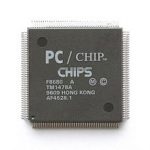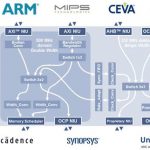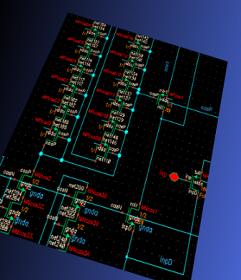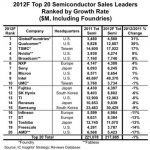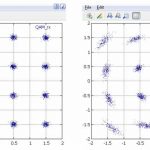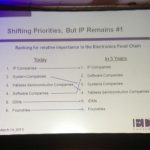Worldwide electronics bounced back strongly in 2010 after the recession of 2008-2009. Every region experienced solid growth, ranging from high single-digit growth in the U.S. to over 20% in the key Asian countries. However in the last two years electronics has slowed down significantly. Several factors contributed to this weakness: a sluggish recovery in the U.S., the European debt crisis, the Japan earthquake and tsunami, and slowing growth in China. Recent signs point to an improvement in electronics. The chart below shows government data on three-month-average electronics production versus a year ago for China, the U.S. and Japan. Total industrial production is shown for Europe and South Korea since electronics production statistics are not available. The black line shows three-month-average change versus a year ago for worldwide semiconductors, from WSTS.
China remains the key driver of electronics. December 2012 growth picked up to 12.7% after falling to 10% in August through October. South Korea’s industrial production growth was 3% in January 2013 after five months below 1%. U.S. electronics remains lethargic with January 2013 down 1.3%, the sixth consecutive month of year-to-year declines. Europe industrial production (for the 27 countries in the European Union) has shown year-to-year declines for 12 straight months. Japan electronics production recovered to positive year-to-year growth in April 2012, but has since fallen to a 16% decline in December 2012.
The recent moderate growth in overall electronics is reflected by three-month-average world semiconductor shipments from WSTS. December 2012 and January 2013 each showed 3.8% growth versus a year ago. Previously the WSTS data showed 16 months of year-to-year declines from July 2011 to October 2012.
What are the key drivers of this pickup in electronics? The PC has been a major factor in the electronics and semiconductors industries for 30 years. In the last two years PC units have been stagnant, based on reports from International Data Corporation (IDC). Over the same time period growth of media tablets has been explosive. Since the current wave of tablets began with Apple’s iPad in 2Q 2010 shipments have grown to 52.5 million units in 4Q 2012, according to IDC (as shown in the chart below). Tablet units in 4Q 2012 were equal to 58% of PC units. Tablets are obviously displacing some PC sales as well as creating a new market. Adding together the unit shipments of PCs and tablets reveals the healthy growth of the combined markets. The blue line shows the change versus a year ago for PCs plus tablets. The combined growth rate was over 20% in the second half of 2011, moderating to low double digits in the first half of 2012. Growth dropped to 1% in 3Q 2012 due to slow Apple iPad shipments as consumers waited for new models. Growth bounced back to 13% in 4Q 2012.
Mobile phones are another major driver of electronics and semiconductors. Overall mobile phone unit growth was weak in 2012, up only 1% from 2011 according to IDC. All the growth has been driven by smart phones, which grew 41% in 2012 as basic phones declined 15%. As shown in the chart below, smart phones accounted for 45% of total mobile phone units in 4Q 2012. Smart phones should account for the majority of mobile phone units in 2013. The high semiconductor content of smart phones compared to basic phones will drive higher semiconductor growth.
Continued growth in the electronics and semiconductor markets is dependent on improvement in the world economy. As shown in last month’s newsletter, the International Monetary Fund (IMF) expects improving economic growth in 2013 and 2014. (See “Semiconductors Down 2.7% in ’12, May Grow 7.5% in ’13” at http://www.semiconductorintelligence.com). Although PCs and total mobile phones are experiencing slower growth, media tablets and smart phones will be key elements in the electronics and semiconductor market recoveries.



